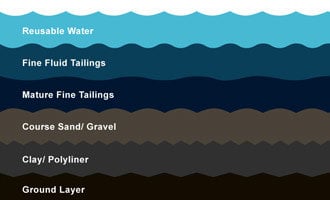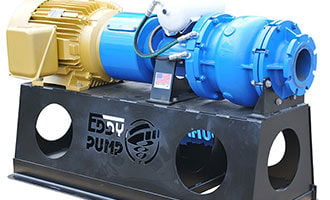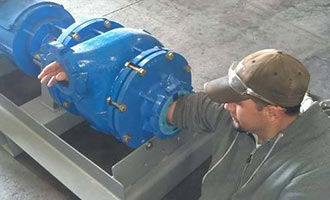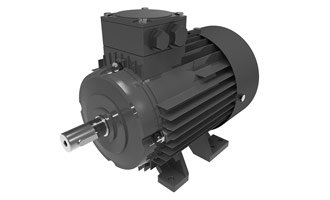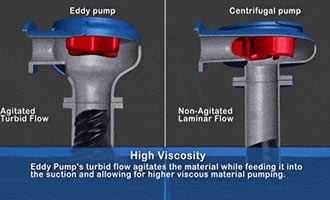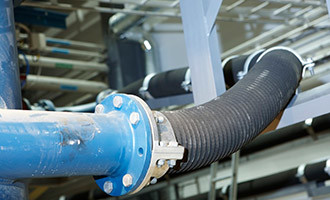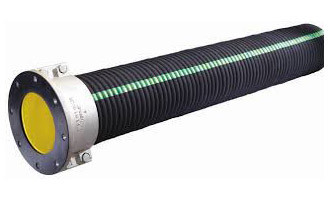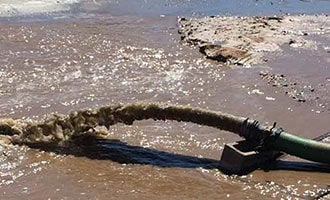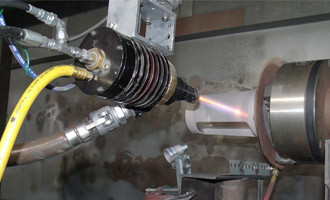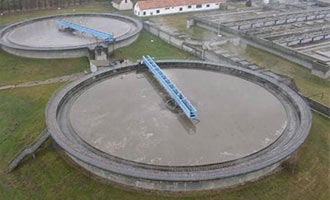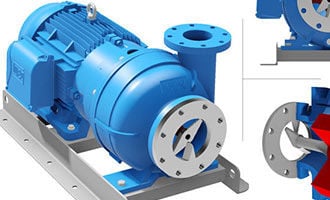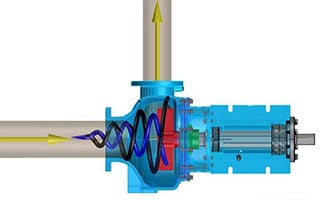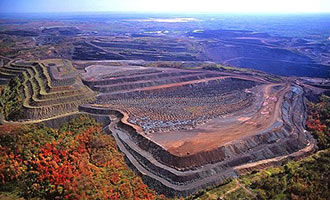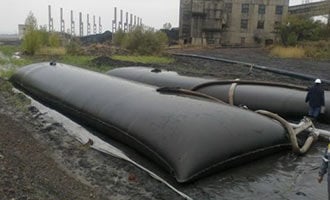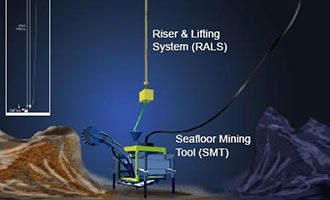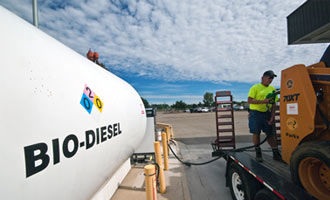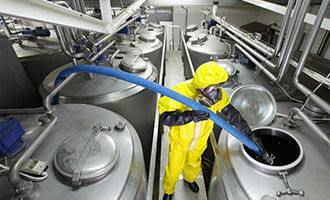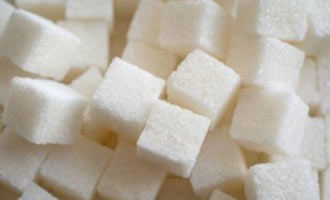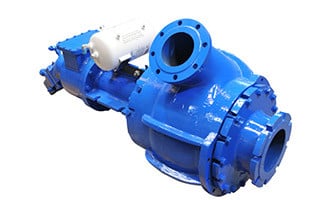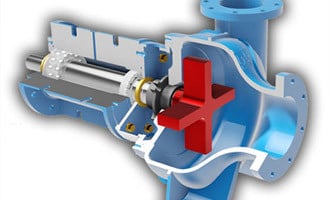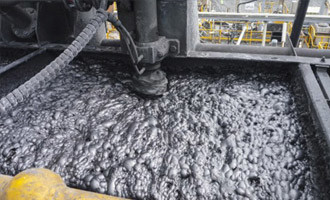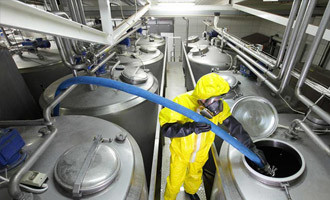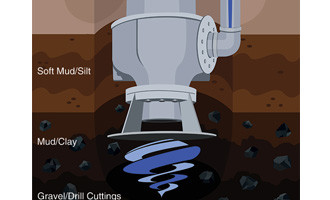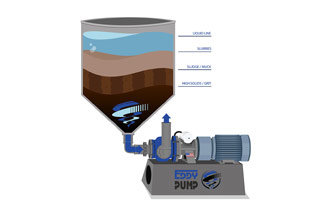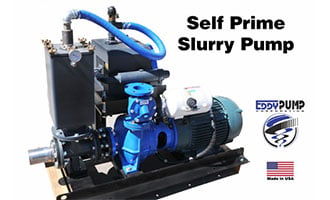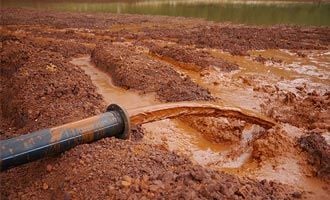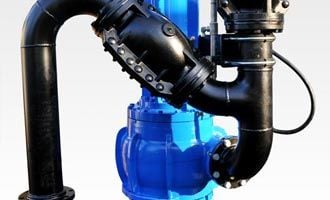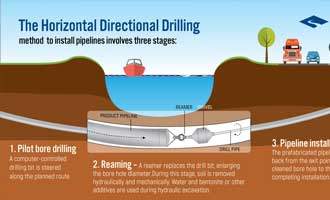What Is a Sludge Pump and How Does It Work?
Sludge pumps are capable of moving viscous, sludgy materials often found in various industries including wastewater, manufacturing, and oil/gas production. Browse Our Sludge PumpsContact Us For a Fast QuoteWhat is Sludge?
The term “sludge”, at an industrial and mining level, is very different than the watery mud that we’re used to seeing. Sludge found in industrial processes can be highly viscous, abrasive, corrosive, or a combination of all three. Additionally, industrial sludge must be removed, transported, and safely processed as these sludges can be toxic to the environment. Traditional centrifugal pumps, such as what you’d use to pump water, are not well suited for heavy sludge and would not last long compared to a pump that’s designed to pump sludge and slurries efficiently.
Sludge is defined as any mixture of pulverized solids denser than water, suspended in a liquid. Mixing solids into sludge or slurry is an efficient way to handle and transport very large quantities of solid materials by means of a sludge pump. Sludge pumps can be found in many different industries including the mining industry, steel processing, power generation, manufacturing, wastewater, and fracking. Sludge can come in many flavors, so it is highly important to use an industrial heavy-duty pump that can withstand a breadth of harsh and corrosive materials without maintenance issues. It is important that pump operators understand both the pump and the material or sludge they are pumping. This is to ensure pump longevity, maintain flow velocity, and achieve optimal material production rates. Sludge pumps operate almost identical to slurry pumps, so much so that the two terms are used interchangeably.
What is a Sludge Pump?
The design of a slurry pump is critical to making sure that the abrasive characteristics of the sludge do not destroy the pump. Furthermore, sludge may contain larger solids that will inevitably lead to clogs or obstruction in many types of pumps. Most centrifugal pumps have an impeller with close tolerance to the volute, meaning that solids above an inch or so will not pass through the pump. Plus, the abrasive and sometimes corrosive nature of the slurry will quickly wear the volute and ruin the tolerance. These problems will cause the pump to lose its suction capability and will require more frequent maintenance. This causes massive downtime when pumping sludge, along with costly maintenance and spare parts.
Sludge, along with slurry, can be divided into two categories: one category is sludge that contains solids that eventually settle, and one category where the solids remain in suspension.
The sludge that contains particles in perpetual suspension is usually made up of very fine, low impact particles which can be abrasive to the pump, but mostly behaves like water. The sludge that contains particles that will eventually settle is a more unstable slurry that does not behave in the way of traditional liquids. Attention must be paid to flow velocity and horsepower capacities when selecting a sludge pump. Most slurry or sludge applications are made of coarse particles so sludge pumps are designed with high impact and wear-resistant features.
Sludge Pump Challenges
Transporting liquid slurry or slurry comes with different challenges for different materials and it is not easy at all, mostly because liquid sludge is very difficult to pump and move depending on its thickness. They usually cause wear on the mud pumps that are used and we must be careful that no obstructions are generated and that the discharge lines in the mud pumps flow properly, so we can make the work of using the mud pumps to move solids more efficient.
The most common challenges for mud pumps depending on conditions are:
Common obstructions
Fast wear
Failures are common
Time without moving solids is time that production is stopped and cost increases.
Be aware of the following characteristics and challenges
Look for the opportunity and see when the mud pump is moving the solid even slowly but steadily (to reduce friction and wear), but also monitor that the solid is moving fast enough that it does not generate obstructions and wear in the lines.
To reduce wear and increase fluidity in the mud pump, reduce the discharge pressure in the mud pump to the lowest possible point.
Of course we must always follow the principles of pumping engineering to keep up with the constant and safe delivery of the sludge to the slurry pump.
Why EDDY Pumps Are Better - Highlights
This video shows how EDDY Pump transports high slurry and abrasive materials. Featured dredge pump equipment includes the Remote Operated Subdredge, Diver Operated Pump and a Excavator Attachment Dredge Pump.








